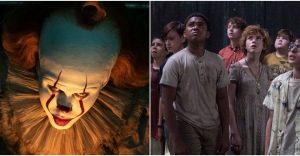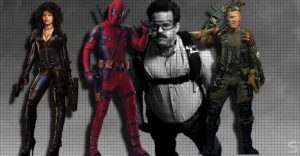Blue Velvet’s 10 Weirdest Moments

The films of David Lynch are very abstract, expressionist, even dreamlike. In other words, they’re super weird. Mainstream moviegoers have been put off by Lynch’s style, but film buffs who appreciate the finer points of the cinematic form can’t get enough of it.
The pinnacle of the Lynchian filmmaking technique is arguably Blue Velvet, his surrealist satire exposing the dark side of a seemingly idyllic American suburbia. From Dennis Hopper’s chilling portrayal of the iconic villain Frank Booth to Lynch’s unsettling use of film language, Blue Velvet is filled with strange scenes. So, here are Blue Velvet’s 10 weirdest moments.
10 Beneath The Suburbs…

Like all the best movies, Blue Velvet establishes its thesis within the first few frames. The movie opens in a typical American suburb with picket fences and lawnmowers and housewives planting flowers, with bright, saturated colors.
Then, David Lynch tells us that, while suburbia may look pretty superficially, but it’s hiding a lot of ugliness under the surface, as the camera moves beneath a freshly cut lawn to show swarms of bugs in an underground nest.
9 The Ear

In the opening scene of Blue Velvet, we see Jeffrey returning from the hospital, where he’s just visited his father following his near-deadly stroke. As he cuts through an empty patch of land, he finds a severed ear on the ground.
Symbolically, the ear represents the criminal underworld spilling over into suburbia, which is supposed to be a safe, cushy environment.
8 Dorothy’s “Blue Velvet” Performance

The audience’s first introduction to Dorothy Vallens, played impeccably by Isabella Rossellini (who ably proved wrong all the naysayers who cast doubt on her acting abilities), is her performance of “Blue Velvet,” the song the movie is named after, in a nightclub.
Many scenes in the movie – and across David Lynch’s filmography – feel like dreams realized on the big screen, and Dorothy’s “Blue Velvet” performance is the finest example of that.
7 The Introduction Of Frank Booth

Blue Velvet’s Frank Booth is one of the most memorable villains in movie history, with Dennis Hopper bringing the character’s evil to life spectacularly. He reportedly begged David Lynch to give him the part, telling him that he was Frank.
Frank’s introduction immediately establishes him as a frightful presence, exhibiting his “Baby” and “Daddy” personas, his penchant for sucking gas from a strange tank, and the unnerving joy he takes in sexually abusing Dorothy.
6 “You Put Your Disease In Me!”

When Dorothy arrives naked at Jeffrey’s house (which was inspired by a disturbing memory from David Lynch’s childhood), startling Sandy, who begins to see Jeffrey’s true colors, she cries out, “You put your disease in me!” This line is left open to interpretation, as it isn’t made clear if Dorothy is referring to an actual sexually transmitted disease or it’s more of a metaphorical thing.
Lynch revels in ambiguity like this, taking joy in throwing something vague out there and watching the moviegoing community debate its meaning.
5 Ben Lip-Syncs Roy Orbison’s “In Dreams”

When Frank takes Jeffrey to Ben’s apartment, Ben spontaneously decides to lip-sync “In Dreams” by Roy Orbison for everybody. Frank forces Jeffrey to watch while Dorothy is allowed to go and see her family.
The song triggers an attack in Frank’s brain. Jeffrey is unnerved as Frank breaks down, all while Ben carries on with his performance.
4 Jeffrey’s First Sighting Of The Yellow Man

The significance of the Yellow Man is one of the many things in Blue Velvet that are up for interpretation. Jeffrey first spots the man in the yellow sport coat when he’s sneaking into Dorothy’s apartment.
That’s when he assigns him the “Yellow Man” nickname that he carries through the rest of the film.
3 Frank Kisses And Beats Jeffrey

Following a night of drinking and lip-syncing, Frank drives Jeffrey out to a field in the middle of nowhere, where Jeffrey has no idea what to expect. When they arrive, Frank forces himself on Jeffrey for a kiss, and then spontaneously beats him until he loses consciousness.
Like all the best directors, David Lynch uses violence with a purpose. In this case, it’s to exemplify that violence serves no purpose. It’s random, arrives out of nowhere, and can’t be explained.
2 Jeffrey’s Breakdown

When Jeffrey and Dorothy first have sex, she tells him to beat her, and he does. By doing so, Jeffrey crosses over into the dark emotional territory occupied by Frank Booth – which he previously deplored throughout the movie – and he weeps as he realizes he’s becoming Frank.
He posed the hypothetical question, “Why are there people like Frank?,” and then, without even realizing it, he became a person like Frank.
1 The Chilling Climax

In the climactic moments of Blue Velvet, Jeffrey rushes to Dorothy’s apartment, where he finds the Yellow Man standing in a daze, having suffered a severe head injury, with his brain hanging out of his bloodied skull.
The whole sequence plays out like a stressful nightmare as Frank shows up and Jeffrey shoots him in the head, with the death playing out in disturbing slow-motion. This scene shows off Lynch’s ability to weave unsettling imagery together like no other filmmaker.
About The Author


















